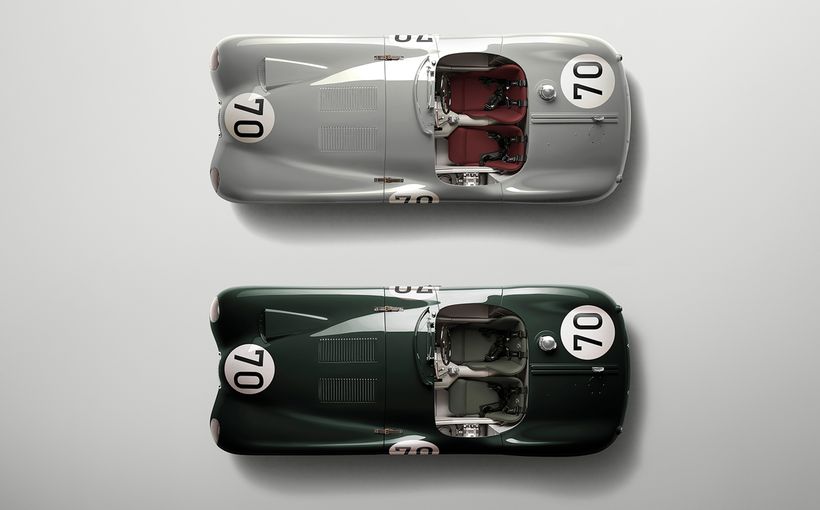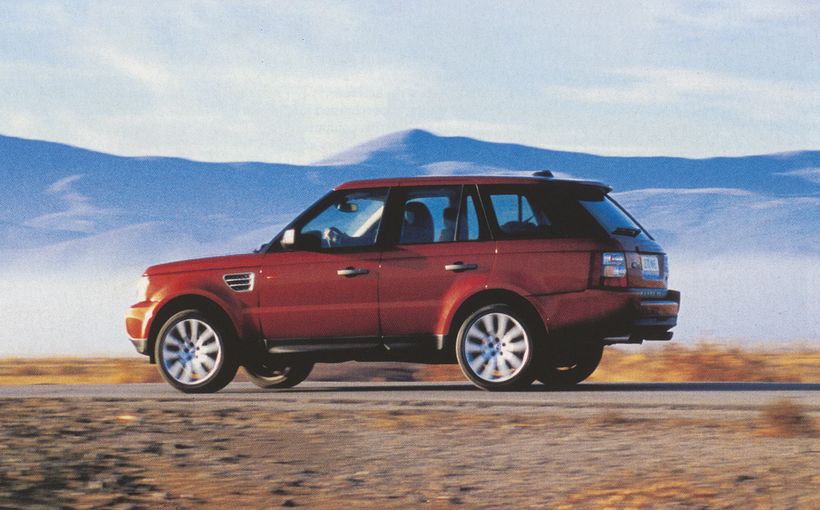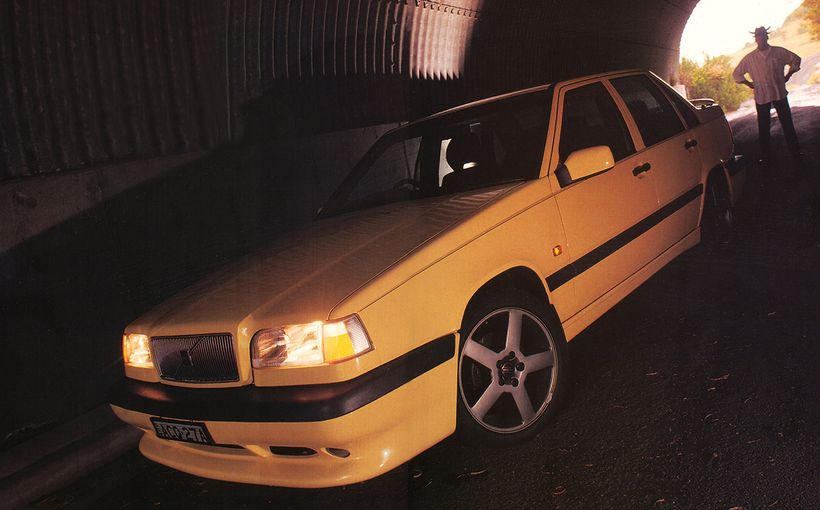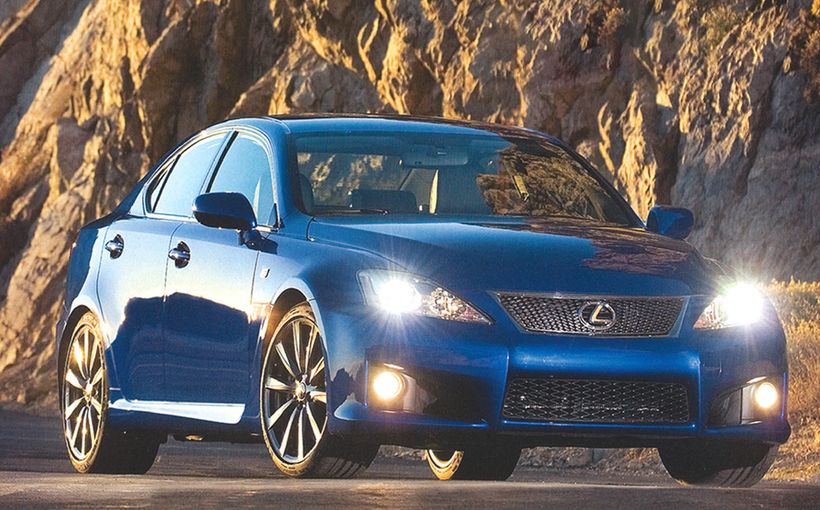TWR-IFFIC 220 - Jaguar’s road rocket has been made leaner and meaner

Too much throttle could cause mayhem in the High Street, I ponder as I drive around the picture-postcard town of Midhurst. Too much throttle can cause mayhem wherever you are, if the roads are damp, and this is one seriously powerful car.
The TWR 220S has one vital statistic which deserves careful consideration: 508 kW rather more than any other road car, McLaren F1 included, can muster. Its 3.5 litre twin turbo V6 packs an even greater punch than the Jaguar XJ220's, aided and abetted by a crash diet that has trimmed 500 kg off the corpulent form of Jaguar's 342 km/h supercar. Less weight, more power, equals more go.
Floor the throttle in first gear on a dry road and the wheels rotate so quickly that shareholders in Bridgestone can almost see their dividends increasing. Boot it hard in fourth gear on a wet road and you can almost see your insurance broker running for cover.
Once you've got the tyres meeting terra firma, though, this car shortens roads like a Sega VirtuaRacing machine gone out of control. And overtaking becomes very simple.

I've driven two road cars which have the ferocious pace of this thing: the McLaren F1 and the Bugatti EB110SS. Like those two, this car has the kind of thrust that pins you back in your seat when you bury the throttle and keeps you there for as long as courage allows.
There's a twilight zone beyond 5000 rpm which you explore when the road's clear and dry and you're in the mood for some real excitement.
The 220S is, if you like, a rather superior hot rod. Cormnissioned by Jaguar specialist XF Engineering from Tom Walkinshaw Racing, it's essentially a lighter and more powerful gentleman's racing version of the Jaguar XJ220. In motorcyclist parlance, it's a café racer. According to Andy Morrison of TWR, it's the kind of car you can drive to a circuit, race (or exercise) and drive home again.
It is also a car which can become, with a bit of work, a proper racer. Strip out the interior, modify the suspension, convert the one-piece composite tail-cum-sill section into a removable panel and you will have a virtual replica of TWR's XJ220C racer which would have won the GT class at Le Mans two years ago, but was disqualified on a technicality.

Starting point for the 220S is a Jaguar XJ220 which has all the alloy panels - save the doors - replaced by composites. New wheels, a more basic interior and lighter panelling all contribute to a 500 kg loss and a stripped down total of 1080 kg.
The bodywork has been revised to include a sports racer style nose splitter and a massive adjustable rear wing that incorporates a carbon-fibre trim tab (Gurney flap). Inside, the radio is ditched, the steering wheel replaced and some decent seats that lower the driving position are fitted with a proper four-point racing harness.
Mechanically, the 3.5 litre quad cam 24 valve V6 gets a remapped ignition system, a different exhaust and smaller turbos that both increase power and decrease lag. The all wishbone suspension is thoroughly retuned, using stiffer springs and uprated dampers all round, while greater castor and an increased camber angle are incorporated at the front.
Finally, the front brakes are increased in diameter and are clamped by six-pot callipers.
The changes haven't made this particular 220 any smaller than the 2.1m wide original. It's a struggle to get into the car, for the door doesn't open very wide and is poorly disposed relative to the seat. And you have to stoop beneath the roof and step across a broad sill.

Once inside, you're held in place by a Connolly-covered lightweight seat that pincers back, hips and thighs, set low enough to offer more headroom than a normal XJ220.
The driving position is comfortable - straight legs, slightly bent arms - but with head eerily close to the window frame.
Belt up - you need to adjust the harness to suit your girth beforehand - and look for the ignition key. Eh? Like the radio, the ignition key housing has been blanked over by a piece of functional carbon fibre, so you fire up the 220S by flicking a little green toggle to activate the electrics, then hit the large red button next to it.
The V6 chugs at idle. The S sounds a good deal better than a standard 220 thanks to a louder, ruder exhaust note, but even that can't hide clattery engine internals that do a good impression of a tractor.

On the road at low speed, the 220S is acceptable if not exactly refined. The clutch is quite heavy but smooth, the gearlever notchy and vague in its movements and the suspension stiff It's not so harsh that your fillings fall out, but finn enough for you to feel most bumps underneath.
The engine drones away soullessly at low rpm, but at least the car - with 713 Nm of torque on tap - is tractable and doesn't suffer from the lack of low-speed pulling power that blights the Bugatti EB110. And - surprise - the steering is light and easy at low speeds.
Move away from town and the 220S starts to become interesting. When you floor the throttle, the exhaust makes a loud throaty growl while the turbos whoop and the mechanical clatter dies down. It's an unusual sound, but a pleasing one nevertheless.
Aural accompaniment is enhanced when you come off the power at high revs because the exhaust pops and crackles and bangs. Morrison says that it also flames out as unburnt fuel detonates in the pipes.

The engine is flexible, too, pulling from as low as 1500 rpm, moving through a nasty vibration period 500 rpm later, then cutting loose with a vengeance above 3000 rpm before a further explosion around 5000 rpm. There's none of the stuttery lag or lowdown impotence you usually find in a turbo engine, and it seems to rev tnore smoothly and willingly than the lower (404 kW!) output V6 of the Jaguar 220.
The gearchange - fifth out on a limb from the conventional H-gate - is never brilliant, but the steering and brakes are. It feels over-braked, where the Jaguar version's anchors felt barely up to the job. There's no mush, no slack motion. Which is the same with the steering.
Despite the lack of power assistance it's quite light, yet is so accurate and well weighted that it feels as if your hands are tied to the steering joints. It is one of those systems that's so good that you don't need to think about steering the car - it just feels natural.
Unless you're mad, the chances of finding the Jaguar's limits on the public road are as likely as convincing someone that politicians are honest. In the dry there's the kind of massive grip that tugs at your neck muscles, while it darts into corners with the eagerness of a puppy chasing a stick. Apply the power and the 220S goes through any bend in a stance that defies conventional handling babble - it just grips and goes round.

This roll-free, fuss-free cornering is achieved at some expense, though. While the damping is compliant enough to soak up mid-corner bumps, the 220S can follow the road's contours like an addict looking for a fix. You have to let your hands fall limp and let the steering wheel jiggle, because holding on tight just exacerbates the problem.
You discover why the car is so stiffly sprung when you visit a circuit. When I arrived at our chosen venue - Goodwood in Sussex- it was raining. After my last experience with the Jaguar XJ220 at a wet track, I was all for packing up and going home.
Without a doubt, that was one of the worst handling cars I've ever driven, its tendency to run wide on comers followed by vicious and sudden oversteer if you tried to balance it on the throttle. The brakes were lousy . And when you tried to wind lock off, the steering would kick back the other way.
Also, Goodwood is not the place for an evil-handling car, least of all one with 508 turbocharged kilowatts. The track is fast and demanding and runoff is limited. It is not a place to have an accident.
Fortunately for my health, the 220S is much less of an animal. Reducing the weight, uprating me front brakes and playing with the front end have resulted in a car that's much easier to drive and much more predictable, too.

Where the XJ220 had to be hauled into corners, the 220S darts in. Where the XJ220 nosed from where you pointed it, the 220S hits apexes as surely as Schumacher wins races.
And where the XJ220 suddenly lurched into lurid slides, the 220S needs throttle-induced provocation before the tail swings wide.
Around Goodwood, the 220S feels like a thoroughbred rather than the alley cat that is the XJ220. There's virtually no roll or pitch, the basic cornering attitude is neutral and the brakes feel almost powerful enough to stop the earth rotating.
You can't be a complete hooligan with the right pedal, simply because of the laws of 508 kW physics. But where the XJ220 feels a duffer on the track - and too bloody big on the road - the 220S feels good.
Sharp. Sorted. The kind of car you'd expect from a racing organisation that's won Le Mans and touring car titles.
The 220S - of which TWR will build a minimum of 10 and a maximum of 20 - feels like an evolution of the Ferrari F40. Despite the electric windows, reasonable soundproofing and air-conditioning, it has that same raw track-car-for-the-road appeal. It doesn't sound as appealing, but its dynamics are even more exciting and it's even faster.
TWR hasn't run performance figures yet, but claims a 3 70 km/h top speed, while Morrison reckons that it will be as fast off the line as anything with road tyres and two-wheel drive can be.
What really impressed me was how TWR has turned a dog into an awesome- if slightly impractical- car. There's little to separate the TWR 220S from the McLaren F1 and the Bugatti EB110SS: and as it costs £250,000 plus tax in the UK rather than the Waking car's £450,000 plus taxes, would-be GT racing contenders have got a financial head start.
Shame, though, that TWR couldn't shrink the dimensions when the 220 went off for a bit of forced starvation.

Go Back in time with the Wheel Archive. Get FREE access to 5 years of Wheels archive content now!
Protect your Jaguar. Call Shannons Insurance on 13 46 46 to get a quote today.









